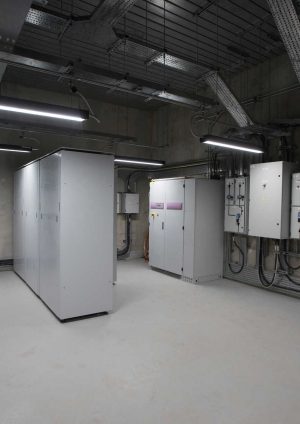1. Introduction
The purpose of this paper is to provide the minimum mechanical room design environmental requirements, including temperature range, ventilation, and noise criteria for each room type. This could be used as part of the brief for any designer of a Station, Shaft and Portal.
With an agreed set of minimum environmental requirements every opportunity is being made to:
1. Drive out unnecessary complexity of installation.
2. Drive out unnecessary complexity of operation.
3. Gain more consistency of design and application.
4. Reduce capital and operational expenditure.
There is an accompanying document that should be read and used alongside this, Mechanical Design Principles.
2. Minimum Design Requirements
2.1 External Temperature Design Criteria
For the purposes of performing heating and cooling calculations in London, the following temperatures should be used:
Winter: -3°C dry bulb, saturated
Summer: 30°C dry bulb, 20°C wet bulb
To arrive at these criteria, consideration has been given to:
• CIBSE Guide A [2]
• LU Standards [4], [5]
• ASHRAE Standards [3]
• Guidance on the effect of climate change and future temperatures [1]
2.2 External Noise Criteria
The following design criteria apply to the public realm surrounding the stations:
1. Normal Plant (1m from openings/ louvres): 65 dB(A)
2. Tunnel Ventilation Plant (normal operation, 1.5m above pavement level): 65 dB(A)
3. Emergency Plant (1m from openings/ louvres): 78 dB(A)
These Criteria are for guidance only and are subordinate to the requirements of the local authority with regard to the nearest noise sensitive receptor.
The acoustic design should meet the stated criteria with noise emissions from emergency plant during their intermittent operation in routine testing and maintenance works.
2.3 Design Criteria Schedule
The design criteria to be applied are given in Table 1 – 6.
Tables 1-6 : Pages 1 to 6 of Mechanical Design Criteria
TABLE 1 :
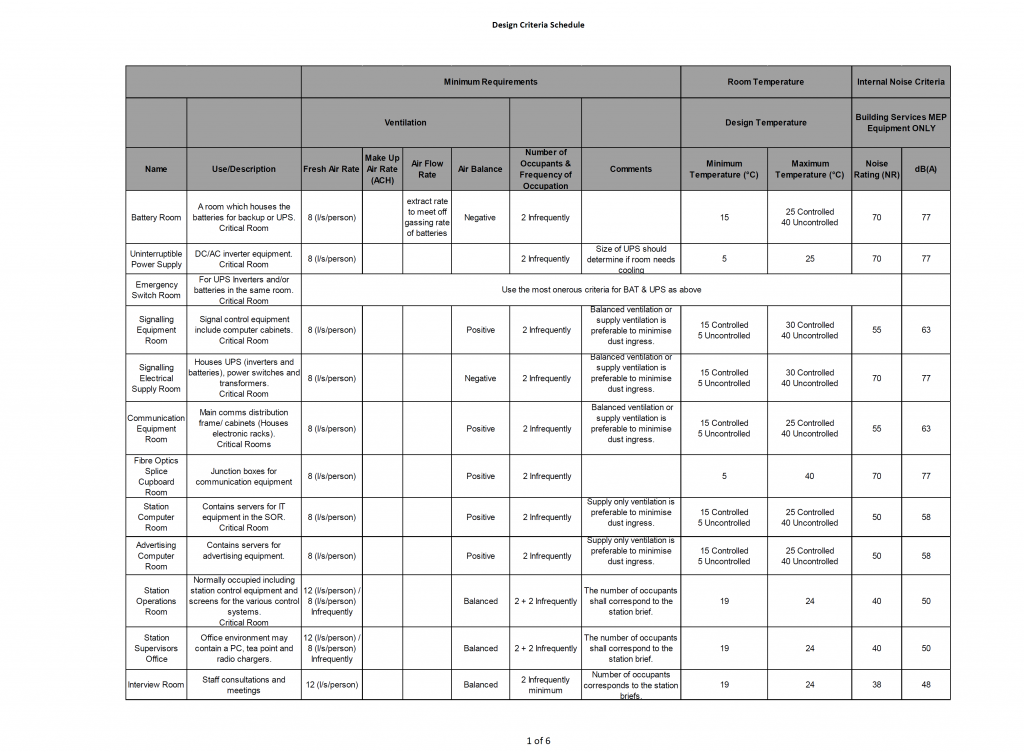
TABLE 2:
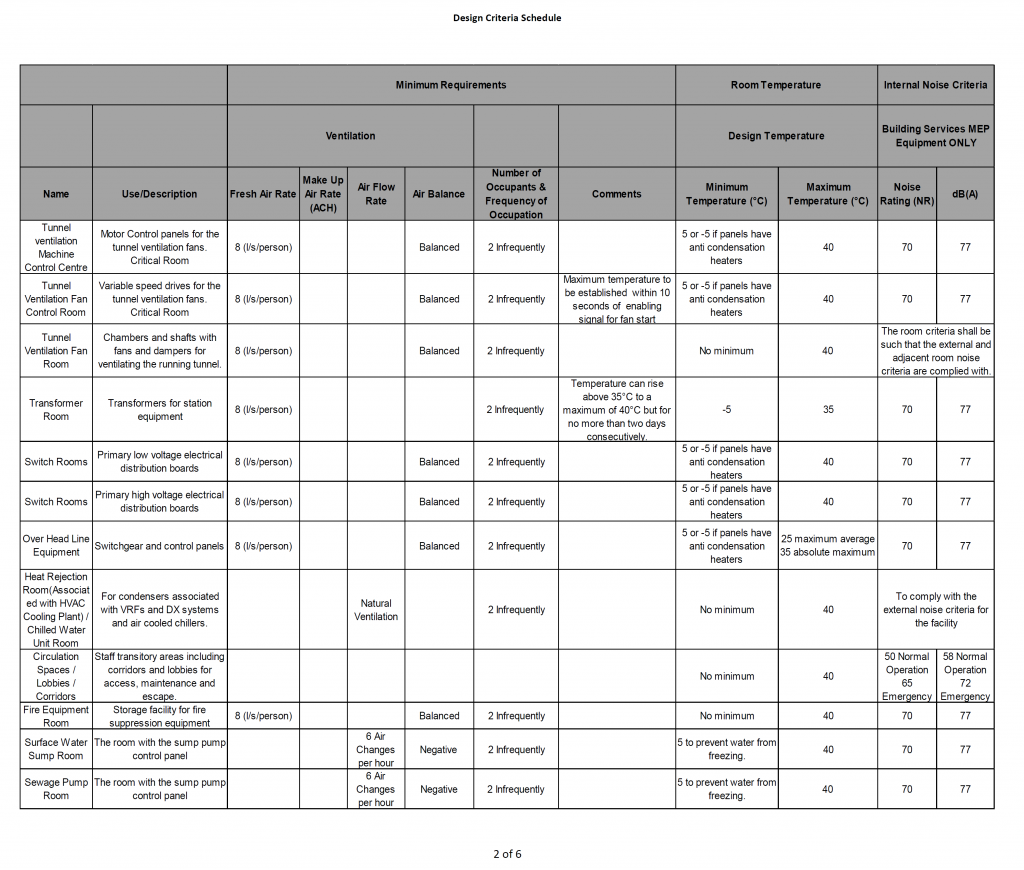
TABLE 3:
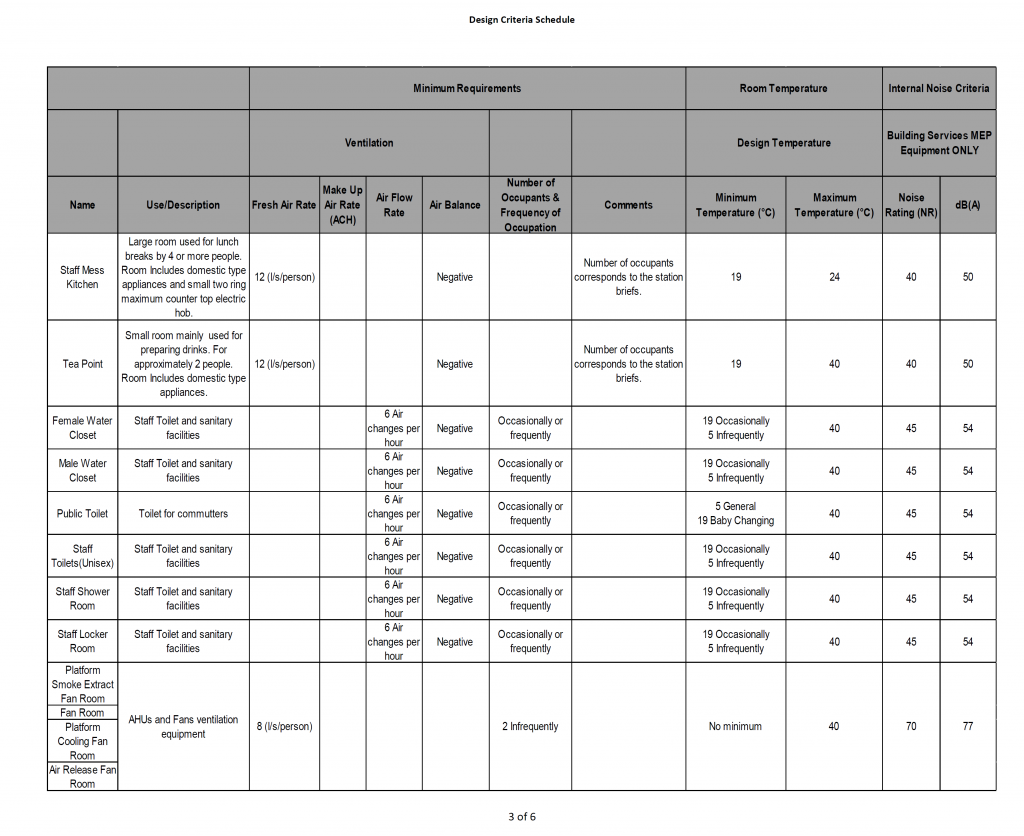
TABLE 4:
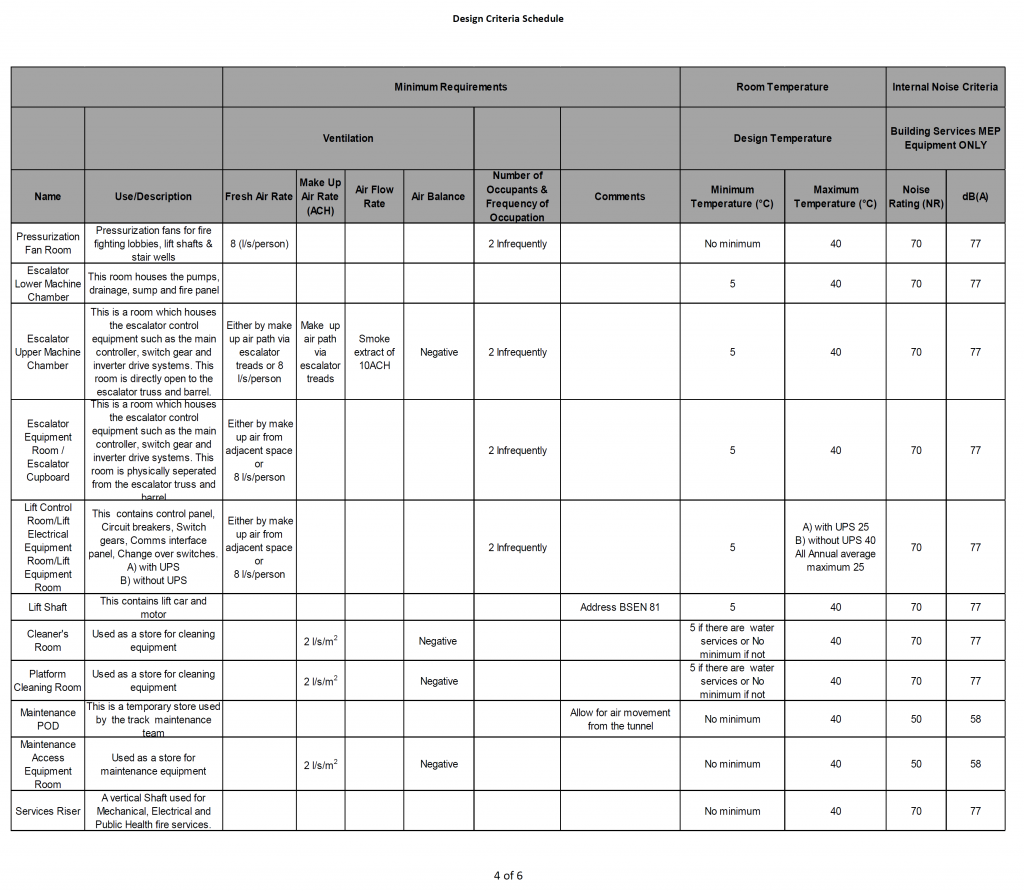
TABLE 5 :
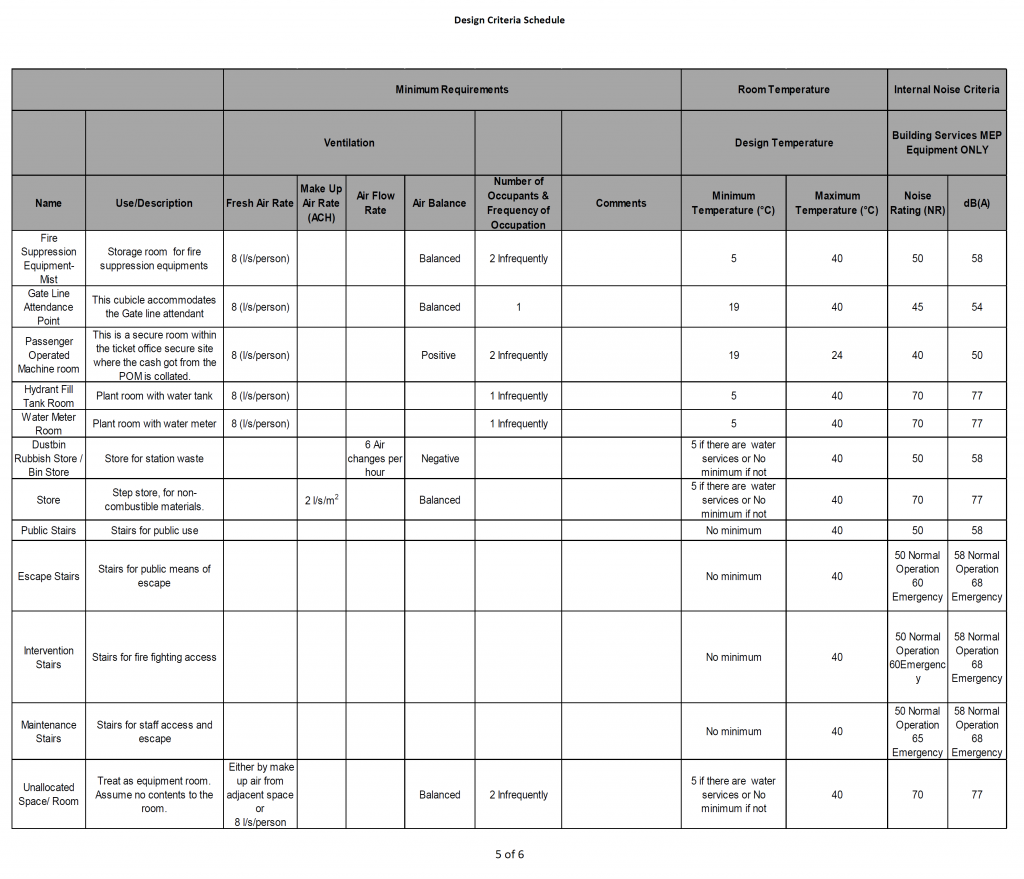
TABLE 6 :
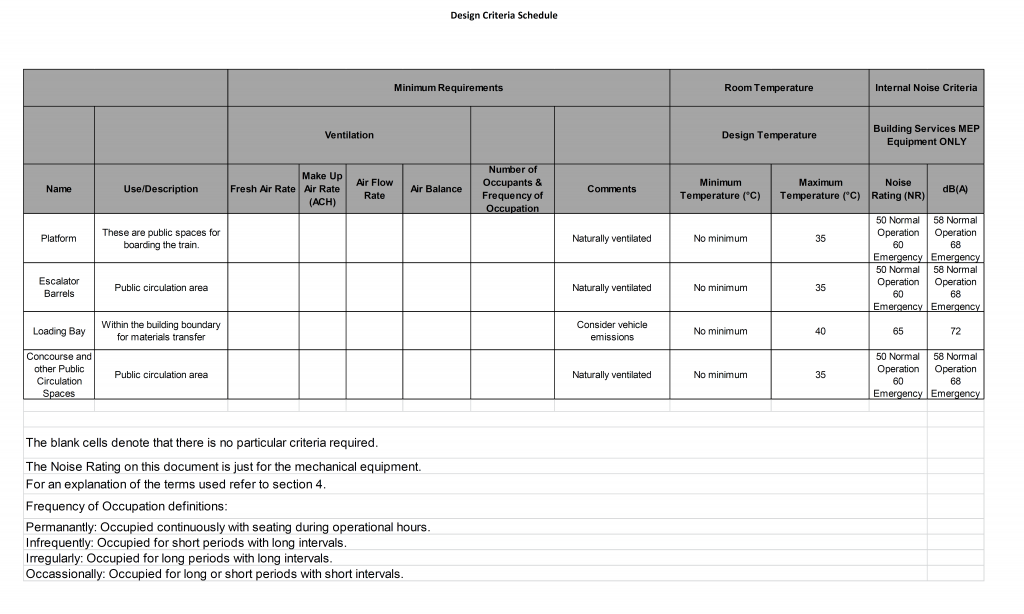
3. Terms used on the Design Criteria Schedule
| Positive Ventilation |
The supply air flow rate being greater than the extract air flow rate.
|
| Negative Ventilation |
The supply air flow rate being less than the extract air flow rate. |
| Balanced Ventilation |
The supply and extract air flow rates are equal. |
| No minimum |
There is no lower limit to the temperature therefore heating is not required. Where this is the case any electrical and electronic equipment that requires protection against condensation formation should be protected by local heating.
Where this is the case and there is the possibility of a fluid freezing and degradation of performance, for instance water pipe work or batteries, then protection against freezing should be provided. |
| Controlled |
This is a temperature limited by a particular design solution. |
| Uncontrolled |
This is the temperature limit when the particular design solution stops functioning in the event of total loss of power. |
| Internal Noise Criteria |
This is the internal noise limit of MEP equipment only, not including the noise generated by other systems or equipment which would be in the room or have an influence on the noise rating in the room. |
4. References
[1] CIBSE Technical Memorandum on climate change TM36
[2] CIBSE Guide A The Chartered Institution of Building Services Engineers London, 2007
[3] ASHRAE Standard 90.1 Rev 2013
[4] LU Standard 1-068 A3 Mechanical Building Services, Utility Provision and Energy Management in London Underground, May 2011
[5] G-074 Guidance Document for 1-068 Mechanical Building Services, Utility Provision and Energy Management in London Underground, April 2011
